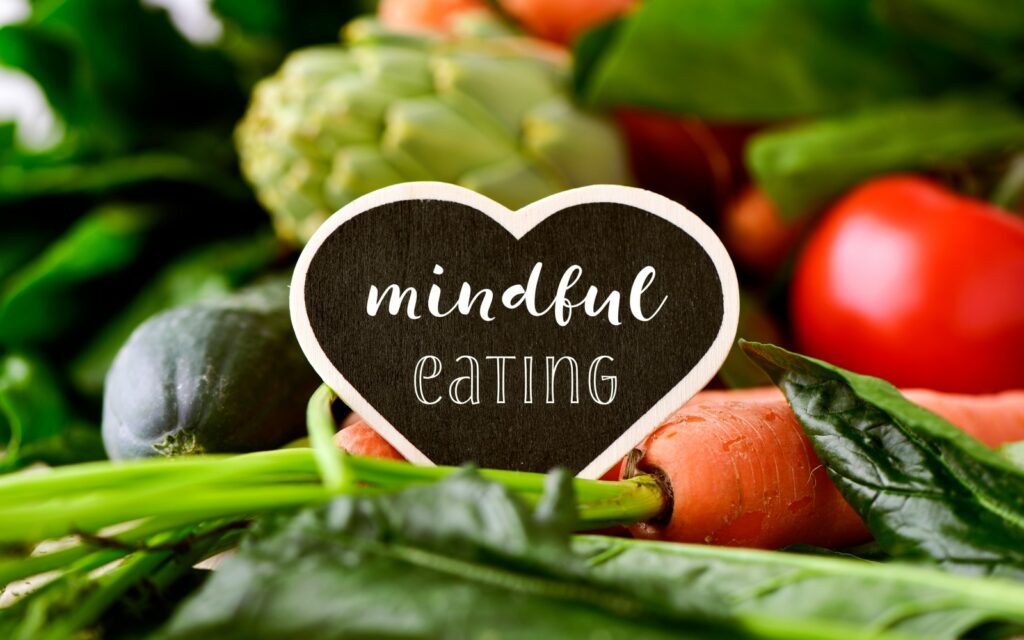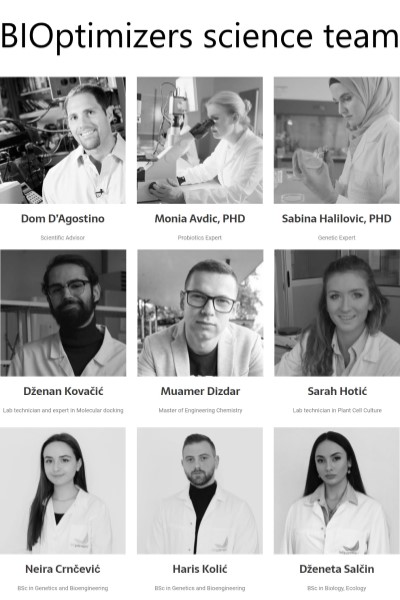
In the previous article, Part 1, we covered nutritional factors that contribute to extreme longevity in the Blue Zones. In this article, Part 2, we’ll cover lifestyle factors that extend these people’s lifespan and healthspan.
1) Community

Having supportive social relationships is fundamental to longevity. In Blue Zones, individuals dedicate considerable time to nurturing their bonds with family members and offspring make a point of keeping their elderly parents in close proximity. [1]
Blue Zones
Approximately 20 to 30% of longevity is attributed to your genetic makeup. This leaves the remaining 70 to 80% in the hands of your diet and other lifestyle choices.
To unravel the secrets of longevity, researchers turn their attention to areas around the world known as Blue Zones. They include:
• Okinawa, Japan
• Sardinia, Italy
• Nicoya, Costa Rica
• Ikaria, Greece
• Loma Linda, California
• Vilcabamba, Ecuador
These places have a high number of nonagenarians and centenarians – individuals who surpass 90 and 100 years of age, respectively. Most of these individuals are very active and functional, at least well into their 80s. By examining commonalities between the Blue Zones and similar regions, researchers gain insight into what contributes to longevity.
Furthermore, they tend to be active members of faith-based communities, regularly attending services and socializing with individuals who share their beliefs. Being part of a supportive community of like-minded individuals who prioritize healthy behaviours can provide a strong sense of accountability.
A comprehensive meta-analysis spanning six decades of data delved into the connection between social support and lifespan. The study revealed a consistent body of evidence indicating a favourable correlation between social support and increased longevity. [2]
The evidence also pointed to three neurobiology pathways linking social support to longevity:
• The autonomic nervous system: includes the parasympathetic and sympathetic nervous systems in charge of regulating involuntary processes such as your heart rate, blood pressure, breathing, digestion, and sexual arousal.
• The neuroendocrine system: makes and releases hormones into your blood to control growth, sleep, hunger, reproduction, and metabolism
• The immune system: defends your body against infection while protecting your cells.
In response to environmental and social signals, these systems adjust their functioning by either triggering or suppressing defensive reactions. When confronted with social cues perceived as threats, your body reacts by heightening cardiovascular activity and elevating cortisol levels and inflammation, aiming to safeguard you. Prolonged inflammation, however, can escalate the likelihood of disease and mortality. [2]
Nevertheless, experiencing a sense of belonging within a community can provide you with a greater sense of security through the reinforcement of essential social cues, considering our inherently social nature. These cues contribute to the maintenance of bodily homeostasis and the regulation of your stress response and inflammation. [2]
Positive social interactions can also increase oxytocin production, known as the “love hormone,” which has many anti-aging benefits, including [3]:
• Anti-inflammatory activity in your brain
• Antioxidant
• Neuroprotective
• Promotes social bonding and attachment, including sexual intimacy
• Slowing down telomere shortening. Telomeres are end-caps of your chromosomes that get shorter as you age, reducing your cells’ ability to divide and regenerate.[3] Short telomeres are also associated with age-related diseases.
If you have a community in place and feel like you have the social support you need, that’s great! Keep it up. If you feel like that area may be lacking, here are some ways to help build social connection [4]:
• Devote extra time to developing the connections you already have. Commit to making regular contact to build connectedness.
• Join a social group that shares the same interests or values as you do.
• Ask for help if you need it, and be sure to support others as well.
• Focus on high-quality connection. Be responsive, supportive, and grateful. Make sure that it’s not a one-way relationship. Try to address conflicts when they arise rather than allowing them to erode your relationship.
• Address any barriers preventing you from connecting with others. Stay healthy. Use technology in a positive way rather than as a distraction. Dedicate time to social interaction rather than allowing a busy schedule to take precedence.
The prominence of community in Blue Zones serves as a poignant reminder of the significance of social connections in our overall well-being. Nurturing robust relationships and fostering a sense of community in our own lives can have a beneficial influence on our health, happiness and longevity.
2) Physical Activity

Centenarians residing in Blue Zones occupy their days with physical activity. This doesn’t merely entail sporadic visits to the gym; rather, it involves integrating physical movement seamlessly into their daily routines as an essential lifestyle component.
A review of the physical activity of Blue Zone residents determined five prevalent modes of activity [5]:
1. Agricultural activities: such as gardening, farming, shepherding
2. In-home activities: like housekeeping and weaving
3. Outdoor hobbies: including sports, horseback riding, hiking and dancing
4. Walking: like hiking in the mountains
5. Labour jobs: such as sailors, fishermen, tradespeople and coal miners
Except for Okinawa, the majority of Blue Zones predominantly participate in moderate to high-intensity physical activities consistently throughout the day, leaving minimal time for rest. For instance, in Ikaria, Greece, men allocate just one and a half to two hours for rest, while women typically rest between one and four hours daily. [5]
Considerable research has been conducted on the health and longevity advantages of physical activity. A literature review exploring physical exercise as a form of anti-aging therapy has uncovered a multitude of benefits [6]:
• Reduces cardiovascular risk
• Decreases your risk of developing obesity
• May reduce the risk of breast and colon cancer
• Tones and preserves muscles and increases muscle mass
• Strengthens bones and joints
• Increases coordination and neuro-motor response which reduces fall risk
• Strengthens your immune system
• Boosts your mood
• Promotes overall well-being
Additionally, exercise contributes to maintaining healthy blood sugar levels and encourages autophagy. [7] Similar to caloric restriction, physical activity can activate the longevity pathways we previously mentioned.
To support longevity, the idea is to move away from just scheduling physical activity and instead incorporate it as part of your lifestyle. Here are some tips to help you get started:
• Take the stairs instead of the elevator
• Mow the lawn
• Take up gardening
• Carry your groceries
• Do household chores that involve movement
• If it’s too cold outside, go walk in a shopping mall
• Park farther away from your destination and walk
• Find an exercise buddy to help keep it fun and hold each other accountable
• Try dancing
• Keep track of your daily activity and improve on it
Tailor your activities to match your capabilities. If you have specific health issues, collaborate with your healthcare provider or trainer to engage in safe and feasible exercises.
Don’t fret if illness forces you to temporarily reduce your activity level. Begin gradually once you’ve recuperated and gradually progress back toward a consistently active lifestyle.
3) Mindful Eating

Now let’s talk about how you should eat. To adhere to the concept of “hara hachi bu” and sustain a caloric deficit, it’s essential to recognize when you are approximately 80% satiated. Consuming your meals rapidly exacerbates this issue. It’s important to allow your hormones the time they need to catch up and signal to your brain that you’ve reached satiety.
Okinawans practice mindful eating to stop eating when they are 80% full. Eating this way can help you develop an awareness of both physical and psychological hunger and satiation (fullness) cues. [8] Here’s how you can practice mindful eating [9]:
1. Pause and show appreciation for your meal: Where it came from, who prepared it, and the company you are with.
2. Take small portions: This helps prevent you from overeating and wasting food.
3. Use all of your senses: Note the colour and texture of your food and the sounds around you while eating. All of this will help you be fully present in the moment.
4. Eat slowly: This makes it easier for you to recognize when you’re 80% full or feeling satisfied. Try taking deep breaths or putting your fork down between each bite, and make sure to chew your food thoroughly.
5. Take small bites: This will help slow down your meal and allow you to take in all the flavours.
6. Try not to skip meals (unless you practice intermittent fasting): Showing up to a meal hungry can make it harder for you to slow down and enjoy your food.
In terms of experiencing cravings for specific foods or contemplating food between meals, mindful eating encourages adopting a non-judgmental approach. [10]
Pay attention to whether your desire for a specific food is influenced by your mood. Instead of attempting to suppress your cravings, simply observe them. These techniques can assist you in discerning whether you’re genuinely hungry. If you’re not hungry, avoid eating.
Furthermore, we emphasize the importance of consuming meals in a calm, rest-and-digest state, which is crucial for optimal digestive system function. This state enables your body to efficiently digest, absorb and utilize the nutrients from your food.
Therefore, adopt a slower pace. Immerse yourself in your environment and savour the intricate flavours of your meals. Be attuned to your body’s signals. By doing so, you can develop greater intuitive eating habits, providing your body precisely with what it requires and refraining from foods it doesn’t require.
4) Life Purpose

Another vital insight gleaned from the research on Blue Zones underscores the substantial impact of having a sense of life purpose in fostering longevity.
The concept of life purpose was initially explored by Viennese psychologist Viktor Frankl in 1959. Drawing from his personal experiences as a Holocaust concentration camp prisoner, he observed that individuals who possessed a sense of purpose demonstrated greater resilience in the face of abhorrent conditions. [11]
Psychologists define purpose as “a stable and generalized intention to accomplish something that is at once personally meaningful and at the same time leads to productive engagement with some aspect of the world beyond the self.” [11]
Let’s break down the definition a bit:
1. A life purpose includes a goal. Life purpose is a long-term aim that guides your actions. It goes beyond short-term goals, providing direction to your life. Not all goals represent your life purpose, and only those that hold deep significance and align with your values genuinely embody it.
2. A purpose must be personally meaningful. While external factors can help nurture your purpose, the motivation to actively pursue it comes from within. You invest your time, energy, and resources in progressing toward your purpose because it holds deep significance to you.
3. A purpose should be inspired by wanting to make a difference in the world. It involves contributing to the well-being of others and the broader world. Pursuing wealth and fame alone does not represent a true purpose. However, supporting your family and finding other ways to contribute to the world can give you a meaningful sense of purpose.
Psychological Benefits
In an examination of research examining the psychology of purpose, scholars established that having a sense of purpose played a central role in psychological well-being. Those who embraced a life purpose reported higher levels of self-esteem and greater overall satisfaction with their lives. [11]
If you find yourself uncertain about your life purpose, that’s perfectly fine. Take some time to focus on what truly matters to you. Allow it to develop organically and don’t rush the process by placing undue pressure on yourself to have it all figured out.
Physical Benefits
A sense of purpose is linked not only to a satisfying life but also to good health. Studies involving older women found that those who expressed a sense of purpose experienced several favourable health outcomes, including reduced cortisol levels, lower cholesterol levels and diminished inflammatory responses.
Furthermore, another research study revealed that adults who had a sense of purpose were less prone to receiving a diagnosis of cognitive impairment. [11]
These results underscore the substantial link between possessing a sense of purpose and one’s overall well-being. It’s important to note that these studies establish correlations, indicating relationships between purpose and health. Nevertheless, it’s worth acknowledging that some seniors may encounter rapid mental and physical decline after retirement. Thus, finding new sources of purpose becomes essential to maintaining vitality.
Numerous other factors, such as eating a caloric deficit, staying physically active or genetics, could also be at play.
Takeaway
Evaluating whether you are in your Blue Zone, a state characterized by optimal health and longevity, demands self-reflection and a candid assessment of your lifestyle decisions. Ask yourself about your:
• Eating habits
• Physical activity
• Social connections
• Sense of purpose
If you sense there is room for improvement – and I firmly believe there is always room for improvement – proactively take action to instigate positive transformations in your life.
References
- Roundtable on Population Health Improvement, Board on Population Health and Public Health Practice, Institute of Medicine. Lessons from the Blue Zones®. National Academies Press; 2015.
- Vila J. Social support and longevity: Meta-analysis-based evidence and psychobiological mechanisms. Front Psychol. 2021;12:717164. doi:10.3389/fpsyg.2021.717164
- Benameur T, Panaro MA, Porro C. The antiaging role of oxytocin. Neural Regen Res. 2021;16(12):2413-2414. doi:10.4103/1673-5374.313030
- CDC. Ways to improve social connectedness. Centers for Disease Control and Prevention. Published April 17, 2023. Accessed May 27, 2023. https://www.cdc.gov/emotional-wellbeing/social-connectedness/ways-to-improve.htm
- Herbert C, House M, Dietzman R, Climstein M, Furness J, Kemp-Smith K. Blue zones: Centenarian modes of physical activity: A scoping review. J Popul Ageing.
- Castillo-Garzón MJ, Ruiz JR, Ortega FB, Gutiérrez A. Anti-aging therapy through fitness enhancement. Clin Interv Aging. 2006;1(3):213-220. doi:10.2147/ciia.2006.1.3.213
- Bareja A, Lee DE, White JP. Maximizing longevity and healthspan: Multiple approaches all converging on autophagy. Front Cell Dev Biol. 2019;7:183. doi:10.3389/fcell.2019.00183
- Warren JM, Smith N, Ashwell M. A structured literature review on the role of mindfulness, mindful eating and intuitive eating in changing eating behaviours: effectiveness and associated potential mechanisms. Nutr Res Rev. 2017;30(2):272-283. doi:10.1017/s0954422417000154
- Cherpak CE. Mindful Eating: A Review Of How The Stress-Digestion-Mindfulness Triad May Modulate And Improve Gastrointestinal And Digestive Function. Integrative medicine (Encinitas, Calif). 2019;18(4):48-53.
- Tapper K. Mindful eating: what we know so far. Nutr Bull. 2022;47(2):168-185. doi:10.1111/nbu.12559
- Created by the members of the Adolescent Moral Development Lab at Claremont. The psychology of purpose. Templeton.org. Accessed May 27, 2023. httpass://www.templeton.org/wp-content/uploads/2020/02/Psychology-of-Purpose.pdf
Share:

BIOptimizers
Become A Biologically Optimized Human

Social Media
Most Popular
Diet and Mental Health
Understanding Low Stomach Acid and How Betaine HCl Can Help
Vitamins and Supplements to Help with Deep Sleep
Subscribe To Our Weekly Newsletter
Categories
Related Posts
Are Sweet Proteins A Healthy Substitute For Sugar?
Excess sugar is linked to health issues like weight gain and blood sugar imbalances. Now imagine enjoying sugar’s taste without the calories or additives—sweet proteins offer this unique advantage. Naturally derived from plants, they’re intensely sweet without extra calories and spiking your blood sugar. First-generation artificial sweeteners, and even natural options like stevia, have a bitter aftertaste. Recent
Diet and Mental Health
Estimates now show us that one in five people struggle with mood and mental health issues, making it a growing public health concern.[1] They can affect how people feel, think, and function. Despite advances in treatment, many people still struggle with symptoms every day. Commonly seen alongside these issues are poor diet, increasing nutrient deficiencies, and
Understanding Low Stomach Acid and How Betaine HCl Can Help
If you’ve ever felt a burning sensation in your chest or struggled with bloating and indigestion after eating, you might think excess stomach acid is to blame. I used to believe the same, treating every bout of discomfort with antacids and hoping for relief. But what if the real issue was too little stomach acid?
Vitamins and Supplements to Help with Deep Sleep
Sleep quality, especially deep and REM sleep, is unarguably one of the most important things to optimize, whether you want to maximize aesthetics, performance, or health. Matt learned this the hard way when he could not feel rested no matter how much he slept. He fell asleep just fine but always woke up groggy even after


